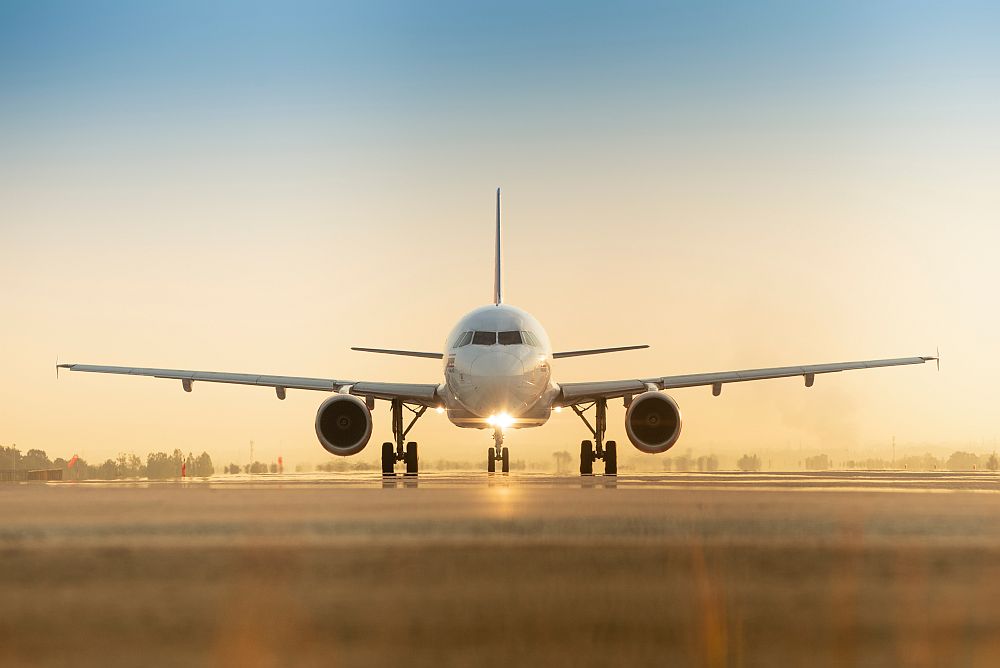
[Image above] As aircraft grow bigger and faster, it is necessary to develop improved, low-cost runway safety materials. Credit: Wichudapa, Shutterstock
As our ability to travel via aircraft has evolved over the last century, so has our knowledge about flight safety and the materials that help make it possible.
Due to the complexity of maneuvering an airplane, takeoff and landing are the most crucial parts of a flight, with the landing being the most common time for accidents. (Don’t worry—commercial flying is still considered the safest mode of transportation.)
The first airplane runways were simply made of grass, dirt, or clay, but they quickly transitioned to concrete as the U.S. Postal Service began transporting packages via flight and thus the need for more durable runways arose. The first concrete runway was constructed in 1928 at the Ford Field airport in Dearborn, Mich.
Since then, concrete and asphalt have dominated the runway space, with preference for the two varying by economic viability around the world. Regardless of the material, Britannica says, “At all depths the strength of the pavement should be at least equal to the loads placed upon it by aircraft wheels,” which is why the material used for the runway is so crucial.
The length of the runway also depends on numerous factors, such as the size of the aircraft, the speed of the aircraft, and the climate or altitude of the airport. Longer runways give larger or faster planes enough runway to reach takeoff velocity, and in emergencies, longer runways also give the pilot extra space to maneuver a safe landing.
Sometimes aircraft still overrun the runway, however, so a safety area designed to slow the aircraft and provide space for firefighting and rescue equipment is needed at the end of the runway. The International Civil Aviation Organization says that runway end safety areas must extend at least 90 meters (~295 feet) beyond the runways.
Not all airports can accommodate the full 90 meters of safety area, though, due to a lack of available land or obstacles such as highways and populated areas. So, starting in the 1990s, the Federal Aviation Administration began research on what is now called Engineered Materials Arresting Systems (EMAS). These systems consist of crushable materials that can safely stop an aircraft that overruns the runway.
Two of the most common EMAS are manufactured by New Jersey-based Runway Safe: the cellular concrete block system EMASMAX and the silica foam system greenEMAS. These systems have helped safely deaccelerate planes around the world, but they and other EMAS can be costly to install and maintain—which is an economic concern considering future projections of air travel.
The size of airplanes and the amount of passenger traffic is projected to continue increasing in the next 20 years, and aircraft manufacturers such as Boeing are expanding their fleet to keep up with demand. The growing number of bigger, faster planes necessitates the development of improved, low-cost safety materials.
Researchers in China recently unveiled a new safety material for EMAS: “marshmallow” concrete. The development comes from the China Building Materials Academy Co., Ltd. in partnership with the China Academy of Civil Aviation Science and Technology and a tech company affiliated with the academy in Beijing.
Compared to traditional Portland cement concrete, which typically has a density of about 2,240–2,400 kilograms per cubic meter (140–150 lb/ft³), this material has a density of only about 200 kilograms per cubic meter (12.5 lb/ft³). So, while the material appears solid—and can support the weight of an aircraft—it also crumbles upon impact, which helps the aircraft deaccelerate smoothly in the case of an overrun.
The name “marshmallow” concrete comes from that fact that the material is foam-based, which has been described by the development team as “blowing bubbles” into concrete to help create the texture needed for the spongy effect.
While aerated concrete is not a new concept, engineering a pore system that allows the marshmallow concrete to crush in a predictable way was challenging. The researchers achieved this feat by strengthening the bubbles with maleated rosin, a resinous material that protects each bubble and prevents them from crumbling before impact.
In addition to the unique foaming process, which results in the concrete featuring more than 80% porosity, an Interesting Engineering article notes that the material also utilizes a two-stage strength control system to help the concrete withstand environmentally induced damage. This resistance to outdoor conditions gives it a step up compared to calcium sulfoaluminate cement, a type of fast-setting, early-strength cement that is used in many international systems but is not as durable.
So far, the marshmallow concrete has been installed at 14 airports in China. At an airport in Nyingchi, in the southwestern region of Xizang (Tibet), a full year of monitoring data showed that the material experienced only a 3% fluctuation in properties, which is below the 10% tolerance allotted by the team. These impressive results enabled the innovation to receive a prize for innovation by the China Building Materials Federation.
As aviation continues evolving to be bigger and faster, innovations such as marshmallow concrete will help ensure that the safety of air travel remains as good or even better than it is now.
Author
Helen Widman
CTT Categories
- Aeronautics & Space
- Cement
- Transportation


